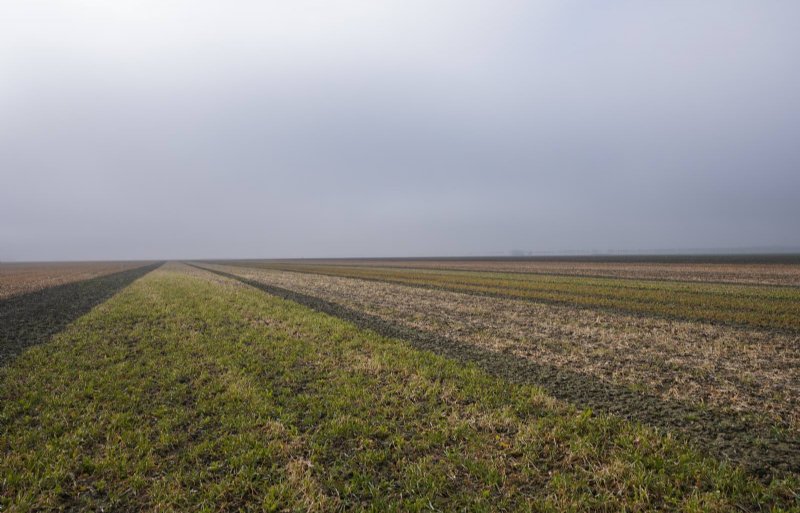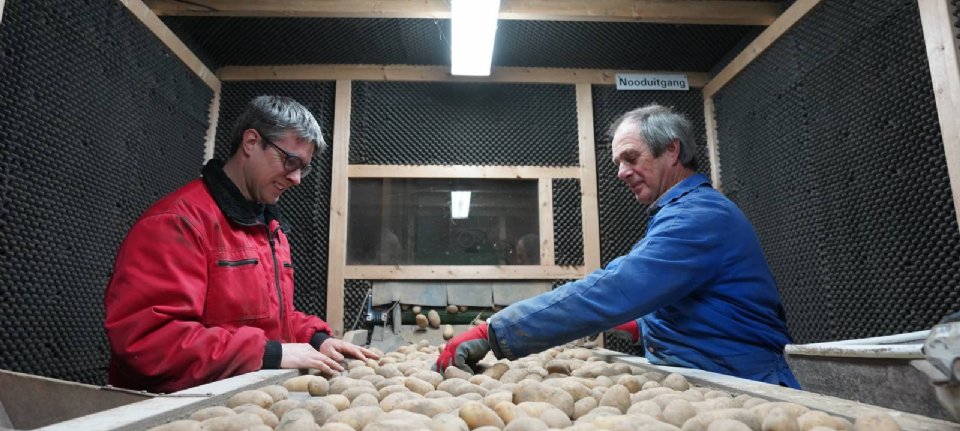At De Olde Stoeve arable farm in Nieuwolda, Groningen, Van ‘t Westeinde has been working the land for four years now without plow. Green manures are used to the maximum. A building plan with potatoes, onions and heavy Oldambtster clay makes that challenging.
Green manure mixtures are an integral part of the cultivation plan. Both on heavy and light soil. ‘They take over the function of weathering by frost, improve workability and stimulate soil life,’ says Jaap van ‘t Westeinde. He runs the arable farm with father Sjaak.
‘The focus is on varieties that produce a lot of organic matter and are therefore a bit woodier. In addition, they must develop well underground, do not make too much mass above ground, do not form seeds and freeze in the winter, ‘says the Groningen arable farmer. Because of this set of requirements, they are experimenting a lot with species.
‘Fortunately, we had a winter this season, which has refurbished the structure. You always know that afterwards, ‘says Van’ t Westeinde. ‘The last two years saw hardly any frost, so the cultivation strategy has been adjusted. For example, we drew potato ridges on the heavy soil in the autumn. We stopped doing this because lumps in the back did not weather sufficiently in winter. It could have been this season. ‘
“With plowing, your organic matter disappears really quickly, we have figured that out by now“
Two faces
De Olde Stoeve has two faces. Seed potatoes, seed onions, sugar beets and winter barley are grown on 55 hectares of sandy soil, which can be silted from 25 to 30 percent, in a 1-by-3 construction plan. The other half consists of heavy clay of 55 to 65 percent sludge. The 1-by-6 rotation includes seed potatoes and onions, alternating with two wheat crops.

The difference was caused by the fact that half of the company was digested in 2005. A layer of sand of 30 centimeters has been raised from 1.2 to 1.7 meters. ‘We sow green manure crops as early as possible on the light soil. Something you don’t want on heavy ground, ‘says Van’ t Westeinde. ‘A lot of mass creates a thick layer of sludge and the soil barely dries. Then you are simply too late in the spring. ‘
For the past four years, the arable farmer has mainly worked with non-inverting tillage. The main tillage is carried out with a Rabe construction advisor and rotary harrow. ‘For the past two years, onions have not been plowed either. This is the only crop that does not precede green manure, just like wheat. We fear problems with crop residues because you sow shallowly with fine seed. ‘
Company details
Family business De Olde Stoeve consists of 110 hectares of arable farming, run by Jaap and father Sjaak van ‘t Westeinde. There is also a group accommodation that mother Nelleke takes care of. Jaap van ‘t Westeinde was previously the manager of the Ebelsheerd experimental farm. ‘Research into non-inversion tillage, for example, is therefore of particular interest to me. There are also test fields on our company. ‘
For potatoes and beets, Van ‘t Westeinde puts together its own mixtures that Ten Have Seeds mixes. For potatoes, the mixture consists of Deeptill TR fodder radish, alexandrine clover, sorghum and sunflower. For beets, these are yellow mustard, facelia, sunflower and alexandrine clover.
‘We leave out the fodder radish because the taproot causes problems with poaching. We sow in untreated soil and do not have a disc seeder. It continues to look for the ideal mixture, ‘explains Van’ t Westeinde.

If the fodder radish and facelia do not develop sufficiently, they overwinter. ‘They were still green at the beginning of March. We don’t spray anything and look for a completely dead crop. With the first frost, everything is flapped. By sowing winter barley instead of wheat, we can sow the green manure earlier and it develops better. ‘
Full field hook cutter
The potatoes are planted directly into the green manure crop on light soil, using a full-field hook tiller. ‘After the wheat is tilled 25 centimeters deep and cut 15 centimeters deep. This way you have enough loose soil. We sow the green manure crops in one pass with a Lemken sowing machine. ‘
The rotary harrow has protruding teeth that keep the stubble on top, but also sieve potatoes. Van ‘t Westeinde:’ If the land is not completely flat, then a cultivator is used in the spring or a cultivator is used in the autumn. One 160 hp tractor is sufficient. The machinery is modest. You can see the plow sole dissolve by tossing. The structure under the building is improving considerably. ‘
Prefer not to have straw dung
The company compresses all the straw and supplies compost or solid manure. ‘Preferably no straw manure, but rabbit manure, for example. Straw is emaciated and has an unfavorable carbon-nitrogen ratio. This season, Protamylasse was sprayed over the stubble as a trial to promote digestion, ‘says the arable farmer.
The availability of manure is a growing problem, which is why Van ‘t Westeinde also purchases compost. For example, the organic matter content on the light soil has increased from 1 to 1.2 percent to 2 percent. ‘That step is easier than going from 2 to 3 percent’, he realizes. ‘The ambition is 2.5 percent.’
On the heavy soil, the organic matter content was on average 6 percent, but this dropped to 5.5 percent. ‘You have to make concessions and distribute the available fertilizer. Now that is 7 to 8 tons per hectare on the light soil. I prefer to sprinkle 10 tons. Grain cultivation and green manure crops provide the heavy soil with a supply of organic matter. With plowing, your organic matter disappears really quickly. The current processing method works perfectly under all circumstances. ‘


